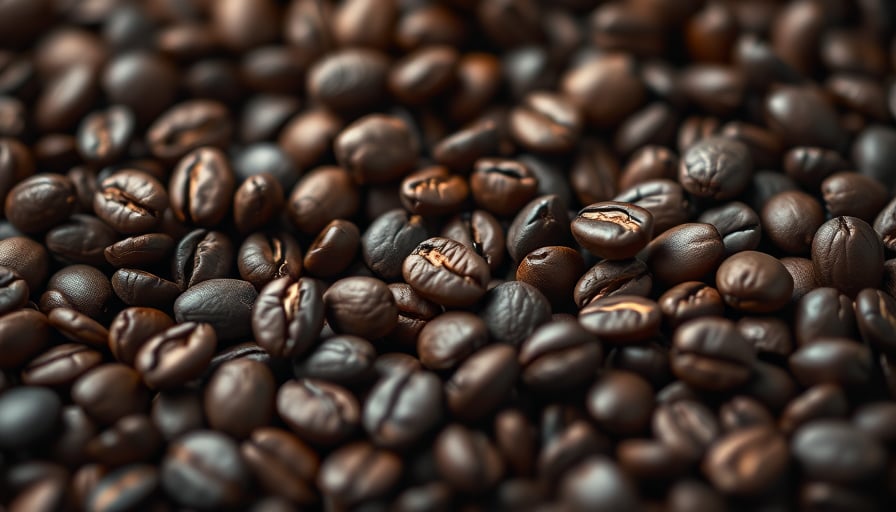Keurig Dr Pepper’s Momentum: Analyst Upgrades, Strategic Investments, and the Path Forward
The recent uptick in Keurig Dr Pepper Inc. (KDP) shares reflects a confluence of factors that reinforce the company’s long‑term value proposition. Over the past week, the stock has risen modestly as a trio of leading research houses—Barclays, Wells Fargo, and TD Cowen—upgraded their price targets. Barclays moved its target to $30, while TD Cowen lifted its target from $28 to $32. These revisions, coupled with a $7 billion capital allocation earmarked for an upcoming business split, are reshaping investor sentiment toward a more optimistic outlook.
Analyst Upgrades and Market Psychology
Analyst upgrades often serve as catalysts for short‑term price action. In KDP’s case, the upgrades underscore confidence in the company’s ability to navigate a fragmented consumer‑goods landscape. By raising targets, Barclays and TD Cowen are effectively signalling that they expect the company to generate stronger earnings growth and higher free‑cash‑flow generation in the medium term. Wells Fargo’s positive stance further consolidates this narrative, suggesting a consensus view that KDP’s current valuation offers an attractive upside.
The psychological impact is amplified by the timing of the upgrades. Market participants, especially those who monitor analyst consensus, often interpret such moves as a “green light” to increase exposure. Consequently, the stock’s recent trajectory—from a modest 1‑month average of $28.60 to $30.25—illustrates how forward guidance can translate into tangible market performance.
Strategic Capital Deployment: Business Split and the JDE Peet’s Deal
1. Business Split
KDP’s $7 billion funding package is earmarked for a strategic business split—an initiative that is expected to unlock shareholder value by separating its beverage and coffee‑maker businesses. By creating two distinct entities, the company aims to:
- Align management focus: Each division can pursue tailored growth strategies, product innovation, and market expansion without the constraints of a conglomerate structure.
- Improve capital efficiency: Separate balance sheets allow each business to deploy capital in a manner that maximizes return on invested capital (ROIC).
- Enhance market perception: Investors often value clearer operational narratives; a split can therefore elevate the overall market cap.
The split is expected to be completed by the end of 2025, a timeline that dovetails with the broader industry trend toward modular corporate structures.
2. JDE Peet’s Acquisition
KDP’s €16 billion (≈ $17 billion) acquisition of coffee‑maker JDE Peet’s NV is being financed through a partnership with Apollo Global Management and KKR & Co. Although some market participants have voiced skepticism over the premium paid and the integration complexity, the involvement of these prominent private‑equity firms can be interpreted as a vote of confidence.
Key implications include:
- Supply‑chain synergies: JDE Peet’s global sourcing network can be leveraged to optimize KDP’s bean procurement, reducing exposure to commodity price volatility.
- Innovation acceleration: The merged entity is positioned to accelerate R&D in specialty coffee, a segment that commands premium pricing and high brand loyalty.
- Geographic expansion: JDE Peet’s established presence in Europe and Asia can provide a platform for KDP to diversify its geographic footprint beyond the United States.
Cross‑Sector Patterns: Omnichannel Retail and Consumer Behavior
KDP’s strategic moves mirror broader consumer‑goods trends:
| Consumer Category | Omnichannel Strategy | Consumer Behavior Shift | Supply‑Chain Innovation |
|---|---|---|---|
| Beverage | Direct‑to‑consumer e‑commerce & subscription | Shift toward health‑conscious, ready‑to‑drink formats | Advanced inventory analytics, AI‑driven demand forecasting |
| Coffee‑Makers | In‑store demos + online configurators | Demand for personalized, smart‑home compatible devices | Modular manufacturing, flexible logistics hubs |
| Food & Snacks | Seamless mobile ordering & curbside pickup | Preference for convenience + sustainability | Closed‑loop packaging, green logistics |
Across these categories, a common narrative emerges: consumer expectations for seamless, personalized experiences are driving retailers toward integrated digital platforms. KDP’s split and acquisition strategy positions the company to capitalize on this shift by aligning product development with omnichannel distribution channels.
Short‑Term Market Movements vs. Long‑Term Transformation
- Short‑Term: Analyst upgrades and capital injection have produced a 3–5 % uptick in KDP’s share price, reflecting immediate investor confidence.
- Medium‑Term: Successful execution of the business split will likely unlock a 10–15 % increase in the combined valuation, as investors recalibrate expectations for each standalone entity.
- Long‑Term: The JDE Peet acquisition, if fully integrated, could establish KDP as a global leader in specialty coffee, potentially generating a 20 % CAGR in earnings over the next 10 years.
This trajectory underscores a classic investment thesis: strategic restructuring and M&A can transform short‑term volatility into long‑term sustainable growth.
Conclusion
KDP’s recent performance illustrates how analyst sentiment, strategic capital deployment, and alignment with evolving consumer‑goods trends can jointly propel a company forward. By embracing a modular corporate structure, pursuing high‑potential acquisitions, and focusing on omnichannel retail integration, Keurig Dr Pepper is well positioned to navigate the shifting dynamics of the beverage and coffee‑maker markets. Investors who monitor these developments may find that the company’s trajectory offers both immediate upside and a robust foundation for enduring value creation.
